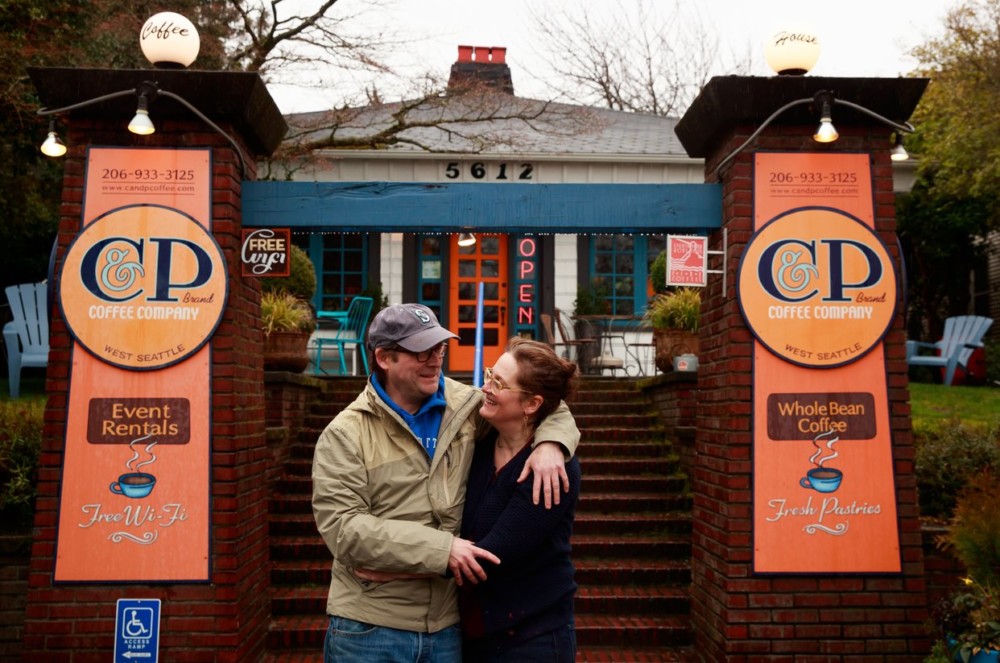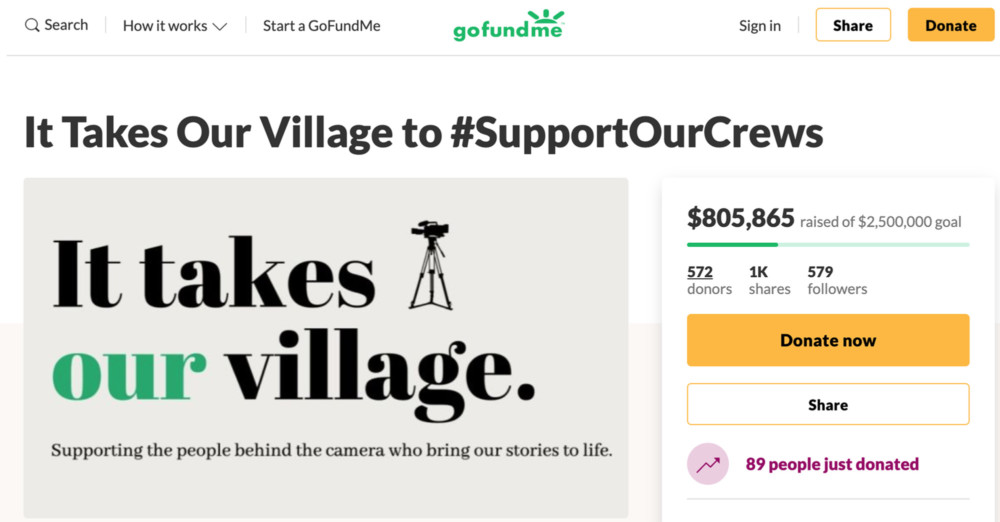By Erik Lacitis
The Seattle Times
WWR Article Summary (tl;dr) Folks in West Seattle joined forces to help keep their beloved coffee shop in business.
Seattle
Something quite astounding has happened in West Seattle these last two months.
More than 500 people were so emotionally attached to a coffeehouse that they came up with at least $77,240 to save it from being torn down.
For 15 years it has been doing business as the C & P Coffee Company in a turn-of-the-century bungalow on California Avenue Southwest.
The historic building and the friendly place were a perfect match in yet another neighborhood undergoing development upheaval.
Liz Nason, 71, who’s retired from managing catering at the University of Washington, and her husband, James Nason, 74, a retired Metro bus driver, gave $500.
The Nasons are not exactly rolling in money.
That $500 could have gone to savings to paint their home that’s a 10-minute walk from C & P.
“In the world of economics in which 2 plus 2 equals 4,” says Liz Nason, “that’s too much money. But in a world where a place like this is priceless, it wasn’t enough.”
With the donated GoFundMe money and an unspecified agreement with the current owner, Cam and Pete Moores, the couple who started C & P, will be able to buy the bungalow that had been marked for sale at $1.25 million.
Cam Moores says she can’t talk about any specifics about what’s happened until the deal is closed. In addition to the GoFundMe money, the Moores on the cafe’s website thanked those who “by other means directly contributed.”
So there will be no apartment building scheduled to be crammed into the 7,500-square-foot lot, which is zoned for three stories.
The Nasons and all others who donated did so knowing they were giving with no strings attached. The Moores could turn around and sell the bungalow, but that’s not likely.
The Moores wrote on the shop’s website, “Thousands of us stood together to say that community matters … We look forward to building friendships and community with you for many years to come.”
But if the place was eventually sold by the Moores, says Nason, “Then it’d be for a very important reason. It’s up to you if you choose to be cynical. I choose not to be cynical.”
Craftsman homes
The outpouring from the community began in January, when the longtime owner of the bungalow accepted an offer of $1.25 million for it. In their lease, the Moores had a right of first refusal if the property was sold, and could respond with their own offer.
They launched a GoFundMe page on Jan. 13. Two weeks later it had reached $61,900 with 517 contributions and eventually was closed at $77,240.
Says Cam Moores, “Oh, my gosh, little kids gave handfuls of quarters over the counter. A longtime customer gave $5,000.”
The bungalow, at 5612 California Ave. S.W., four blocks north of the Fauntleroy Way Southwest intersection, instantly evokes the Seattle of old.
Bungalows arrived on the scene in the early 1900s, taking their style from small homes built during the British Empire for English officers using the Bengal style of architecture.
They’re typically almost always 1 or 1 1/2 stories high, with a prominent front porch and quality woodwork, writes Scott Sidler on The Craftsman Blog. “Maybe it’s the cozy cottage-like feel or the definite sense of Americana they evoke.”
Although listed in county records as having been built in 1915, the C & P structure was featured in the September 1913 issue of Bungalow Magazine.
The magazine was a promotional vehicle for a Seattle real-estate entrepreneur named Jud Yoho. History has forgotten him, but he was one of the prime drivers in the building of this city’s bungalows.
Back then, they were advertised as reasonably priced homes for first-time buyers. Now they command premium prices.
Yoho “borrowed” plans for his bungalows “directly from other sources,” especially the bungalows popular in California, writes Janet Ore in “Shaping Communities.”
Numerous photographs for the Seattle market included bungalows with palm trees. “The backgrounds in these photographs were suspiciously blanked out,” writes Ore.
And because at that time Craftsman homes became popular, “Yoho astutely included the Craftsman image in his advertising schemes,” says Ore.
He did know how to sell.
Using the now familiar pitch of a low down payment, plus monthly installments, Yoho and his competitors targeted “salespeople, clerks, and accountants finally able to move out of their rentals and willing to accept large debt for their first home,” says Ore.
A 1915 classified ad in The Seattle Times offered “A real bargain Queen Anne bungalow on 1st Avenue West” for $2,500.
That’s about $61,600 in today’s dollars, according to the Department of Labor.
That same First Avenue West home — expanded — sold in 2017 for $1.6 million.
The feel of being home
The C & P bungalow started out as the salesroom for a real-estate company selling such homes.
In later years, a number of businesses located there — “A day care, I can’t remember them all,” says Nancy Maples of Ellensburg, the current owner.
Her father-in-law bought the home decades ago, says Maples, and then she and her husband, Jerry, inherited it. He died in 2015 at age 70.
Since Maples had no desire to live in Seattle, she decided it was time to let the property go.
At the C & P, on a recent morning, life continues at its usual rhythm. Some 15 to 20 men, women and kids are spread out among the six large tables, comfy chairs and large couch. Some are talking; many are focused on their laptops or phones.
Jenny Heutmaker, 57, is a clinical social worker. Her husband, Jack Heutmaker, 68, ran a health practice in the neighborhood.
They’ve lived in Highland Park, a short drive from the C & P, for 14 years.
“We couldn’t afford to buy our house now,” says Jack.
They donated toward the Moores’ purchase of the bungalow but asked that the amount be kept private.
“It was worth giving that amount just to make a statement,” says Jenny. “We’re in a time where we have to step up about what we care about.”
Says Jack about the coffee shop, “It’s like coming into somebody’s home.” The first time he walked in, he says about its easygoing ambience, “I fell in love with it.”
Another customer stops by. It is Tiger Gray, 35, who just got out of grad school in social work at the University of Washington.
She’s interviewing for jobs. What she could afford to contribute was $30.
The coffee shop, she says, “It’s like a little beacon of hope in a very dark time.”
It does sound pretty impassioned, talking like this about a simple bungalow where you get a cup of coffee.
But astounding things can come about, when emotions are touched.
















































































































































































































































































































































































